By Walter J. McDonald
Cash Flow is ranked as the number one issue of concern to Machinery Dealer Principals in a recent industry survey. Everyone knows that “cash is king.” But, how do you build the systems infrastructure to optimize dealer cash flow?
The amount of money flowing through a dealership makes cash control critical. The faster cash flows, the lower the working capital requirement and the lower the bank interest charge on the dealer credit line. Take for example, the elapsed time from writing up a repair order to completing the work (Work in Process) to billing the customer and making the payment deposit in the bank. The shorter the time to convert the work order to cash the better the cash flow.
In researching this chapter, we found there are many, many ways that employees in your company can positively and negatively affect cash. One larger dealer found the first giant step was to hold everyone accountable for their time sensitive actions that impacted cash flow.
A well-defined organizational chart with detailed job descriptions for each person in the organization really helped. This held employees accountable for the tasks essential to build positive cash flow in their area of responsibility.
Does your team understand and utilize the key metrics you must achieve to improve cash flow and profitability (as well as market share and customer service & retention)?
There are three important steps to the Cash Flow Improvement process:
- Better Asset Management and Unfreezing Cash will accelerate cash flow.
- Optimizing Margins will build a richer, more robust and profitable cash flow.
Here are some practical suggestions you might find helpful from a non-financial guy just back from the front.
Better Asset Management
In my Master’s Program in Dealer Management Workshop we examine the big four potential cash traps:
- Obsolete Parts Inventory
- Used Equipment Inventory
- Accounts Receivable
- Fraud.
Obsolete Parts Inventory. If you don’t keep your eye on it, parts inventory can go through the roof. Keep dead and slow-moving stock (zero turns in 12 months) under 10% of parts inventory dollar value. I encourage you to look strategically at your parts inventory. Are you providing at least 95% off-shelf fill rate to service on your most important models? Fill rate is the percent of line items on an invoice or repair order that are filled completely out of stock. Partial fill of a line item is no fill.
Your off-shelf parts fill rate for your most important equipment models is your single most critical value-added service in the distribution channel. If you have poor off-shelf parts availability, it is very difficult to provide timely maintenance. This makes customer satisfaction an extremely difficult task and your entire customer base becomes vulnerable to defection to aggressive competitors.
In my Executive Sales Management Workshop we even build a “competitive crush” strategy that focuses on competitors who have weak parts and service support capabilities!
Suggestion: Your management team should identify the 10-12 strategic equipment models you want to support with an extremely high level of service. Review parts consumption for these models. What is your off-shelf fill rate now for these models? What steps can you take to convert slow-moving or obsolete stock to cash? Then, invest this cash in parts necessary to support your strategic models? Establish an off-shelf parts fill rate goal for strategic models. This effort will also improve overall off-shelf parts fill rate.
If you achieve a high fill rate for strategic models and combine this objective with an overall inventory turn goal (72 days or 5 turns) and obsolete stock level goal (under 10%) you will have a dynamite parts operation. With an adequate Inventory Control Tool (stock status report) and a proper inventory replenishment procedure, the astute Parts Manager is able to successfully achieve all three performance targets..
Finally, track parts inventory turns by line item by location for parts inventories in service vans and consignments. Fully utilize manufacturers’ return programs. Monitor performance monthly. Control parts “leakage” with strict charge out procedures. And, be sure to negotiate protected inventory for new models and return non-turning stock.
Purge obsolete parts inventory. To do this, first run a ranking report of obsolete parts line items by manufacturer by dollar value. Focus your attention on the top 20% which probably includes 80% of your obsolete stock problems. Identify parts by machine model and offer special deals to customers with those models. Set up a “sale table” at the dealership. Share gross profit with employees who sell obsolete stock over a specific price. Distribute your obsolete inventory list to other in-line dealers. You can also donate dead, non-returnable stock to your local vocational-technical school to build good will or gain tax benefits.
Used Equipment Inventory. This has been a tough year for used equipment management. We have predicted for several years that declining wholesale values on used equipment was a sure-fire indicator of an economic downturn. Dealers who were carefully monitoring over/under wholesale cash value of inventory could see the rapid drop in values. Their prompt disposition of used equipment has avoided this large cash trap. What are your used equipment inventory turns today? Are you 90 days or under? Do you have the right mix?
Suggestion: Work toward reducing your used equipment inventory. 90 Days and Out! The longer you keep a unit after 90 days the lower the ultimate gross profit margin you will get on the sale.
Each month sell higher margin units with selected low margin units that blend together to reduce the profit impact. Establish realistic trade values and reconditioning cost estimates by an independent appraiser such as your Service Manager. Build that expertise to avoid overly enthusiastic valuations by your sales department. Make the disposition decision early in the deal. What are you going to do with this trade-in unit? Sell “as is,” put in wholesale, recondition to original factory fresh condition, tear down for parts? If you don’t make the disposition decision until 45 days after purchase, you will never get four turns on your used equipment inventory. Finally, hold payment of commissions on the new model until the trade is sold.
Accounts Receivable. Have you done the analysis to determine where your past due receivables originate? Are you tracking by revenue center? Are you ageing and monitoring by revenue center and branch?
A Southeastern dealer found that more than half of his past-due receivables originated in the Service Department. The past due delay was from the time of billing to collection. Invoices poorly stated what work was done and why.
Don’t forget to put tight controls on warranty recovery. Try to recover 90% of warranty due within 60 days.
A California dealer struggled with his parts/service managers selling products to a customer for cash, but the employees let it go out the door without collecting. Usually these sales are to a well-known customer with a promise to bring in a check right away, but this doesn’t always happen. Now they keep “cash” jobs on the radar screen so they don’t become a collection item.
Credit Card billing prior to Rental Delivery is sometimes followed by Payment Declined for the 2nd or 3rd month. Immediately recover the equipment when the 2nd month payment is declined.
Another important area: manufacturer discounts. Often this pool of funds can get very large. Monitor it with the expectation of clearing it up within 60 days.
Suggestion: Be certain to monitor Days Sales Outstanding in Accounts Receivable by department. Calculate it monthly by department and overall and compare to a rolling 12-month average. The rolling 12-month average takes out fluctuations due to spikes in sales (usually at year end) or large collection periods (usually in the first 2 months of the year).
Also, do a “cause analysis.” If Service Department receivables top your list, ask, “Why?” Keep investigating the system until you determine the original “cause.” It might be poorly written repair orders, sloppy administrative procedures, etc.
Machinery Dealer Bus Driver Book Sale
Order our complete 11-volume Master’s Program in
Dealer Management Book Set and Receive Free Global Shipping.
On sale today: US$449.00 SAVE 61%
www.McDonaldGroupInc.com. CLICK “Management Sets–Complete 11 volume set”

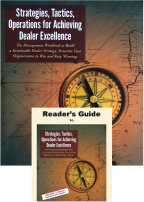
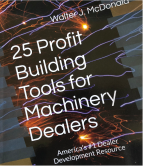
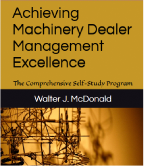
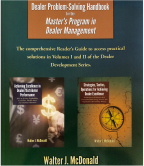
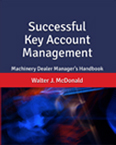
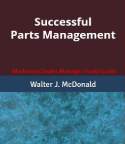
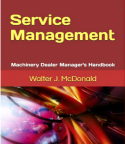
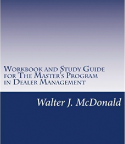
Fraud Protection. Work with your outside auditor to make certain proper controls are in place. A Chicago area dealer just took a hit of more than $300,000.00 from his “trusted” accountant. In less than five months, all three primary cash flows were compromised: payroll, accounts payable and accounts receivable.
Forged payroll checks, forged disbursement checks to vendors and a phony receivables bank deposit account have been uncovered so far. His pre-employment references were excellent in spite of the fact that he did the very same thing with his prior employer. His old company was hopeful that he would make restitution on this new job!
Unfreezing Cash
Transaction Cash Cycles. When times were easier, many dealers didn’t bill service customers until the end of the month. I believe this practice has almost entirely ended. Each department has a transaction cash cycle: the amount of elapsed time from completion of a transaction until it is converted to cash. The longer this cycle, the longer your cash is “frozen” and unusable. You could easily have as much as $400,000.00 in frozen capital.
Suggestion: Review all transactions from when they occur to when they become cash. How long does it take to get your money? Challenge each department manager to define transaction cycles and establish specific objectives.
For example, in the Service Department, Work in Process (WIP) can be a huge cash deep freeze. What is the average elapsed time from job completion by the technician to date of invoicing? I know at least three dealers that are working to reduce WIP to under five days. What is one day of reduced WIP worth to you in unfrozen cash?
Another Service Department hint: rewrite and resubmit rejected warranty claims immediately to your manufacturer. Pay a bonus when warranty receivables are kept under 60 days.
What about new machinery sales? How quickly do you get payment on financed contracts in transit? If a contract isn’t funded, it may be due to a simple oversight. And, it may just sit on someone’s desk unless the dealer has good controls.
Have you investigated credit card sales for service and parts transaction? How would that impact your cash flow? Can you justify the transaction cost? Would the increase in customer service and convenience be justification alone?
Accounting Practices. Here are some additional suggestions.
- Flag past-due payments for all receivables on an exception report.
- Analyze factory receivables as soon as they arrive. Make sure you are following up on rebates and warranty payments promptly.
- Use online banking to reconcile bank’s balance with your balance daily.
- Reconcile monthly bank statement within two days of receiving it.
- You should check the following:
- A daily “money due” list.
- A daily “Flash Report” (Ask me for a good sample)
- A monthly “frozen assets” spreadsheet.
- A monthly spreadsheet showing changes in cash position from previous month.
- Monthly global balance sheet measurements that focus on asset management (current ratio; quick ratio; working capital).
Optimizing Margins
Cost Controls. By now you surely have reviewed each and every expense line item to ensure that you are purchasing at the very best price and paying the least amount of freight. But, what about examining your return on payroll investment by department?
How many dollars of gross profit do you get for each one dollar you invest in total personnel cost in machine sales, parts, service and rentals? One of the very best dealers in North America gets $3.00 in Gross Profit for each $1.00 invested in total sales compensation including salary, commissions, expenses, car and telephone.
How are you doing in each department? Is gross profit return on employee compensation investment by department something you should monitor? How can it be improved?
Suggestion: Employee compensation is one of your largest expenses. Make certain you are getting the proper return. Ways to increase yield in the sales department include more efficient and effective prospecting techniques and customer touches per month objectives. Parts can be improved by incremental sales generated by PM inspections and increasing the average phone order “up sell” amount. Service can be increased by improving labor productivity, reducing re-work, quoting estimates by the job, seeking additional PM “2nd segment work,” and, striving to attain at least 95% of published labor rate each month.
Internal Discounts. Unfortunately, internal discounts for service labor and parts are often seen in used equipment repairs, rental unit maintenance and machinery pre-delivery work. However, the most profitable dealers, those in the top profit performance quartile, do not discount parts and service for internal repairs. They charge internal rates at no less than rates charged to their best external customers.
Internal discounts severely distort profit contributions of parts and service managers. They understate true costs and give a false sense of security. This is especially risky when evaluating financial decisions for rental fleet investments. The worst possible way to reduce rental maintenance cost is to discount internal rates on service and parts.
You are far better investigating details of causes of excessive maintenance by unit.
The reality of internal discounts is that they diminish the profitability of the entire business. Internal discounts are rarely recovered through better pricing to retail customers. The only result is a deterioration of the entire gross profit margin of the dealership.
Suggestion: Charge internal prices at no less than the very best external customer price for parts and service.
Ask me for a copy of my article, The Case Against Internal Discounts..
External Discounts. What is the difference between your published labor rate and your effective labor rate (labor hour $ sales ¸ labor hours billed)? Challenge your service writer to achieve at least 95% of your published labor rate overall on a monthly basis. Move to quotes by the job instead of by the hour.
What about customer discounts on rentals? How many times do you see slow pay accounts using machinery in a very hostile and abusive environment with untrained, non-certified operators, and they get the very best discounts? Does this make good business sense? Shouldn’t only good paying customers get the very best discounts?
Run a Customer Ranking Report by Gross Profit Margin.
- Determine total purchases, for service, parts and rental departments with total gross profit dollars and overall gross profit margin for each account.
- Identify the average gross margin account. What is your average gross profit margin?
- Review large dollar customers who are paying less than the average. Who are those large dollar/low margin accounts who are below your average? Why are they lower than large dollar/high margin accounts in similar industries paying above your average?
- How can you bring below average accounts up to levels achieved by other similar customers?
This report is truly amazing. You will be astonished to see who your highest margin customers are compared to your lowest. This is truly a project worth your effort.
And, the remedial actions required to bring the bottom players up are not at all that difficult!
Finally, sell more to your most profitable accounts!
Your most powerful tool to increase overall Gross Profit is to sell more parts and service to your high-potential Key Account Customers. I have just completed an article on how to do this that will appear here soon. Ask me for an advanced copy: Walt@McDonaldGroupInc.com.

